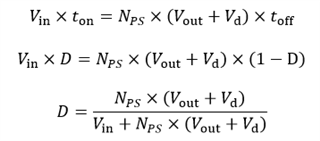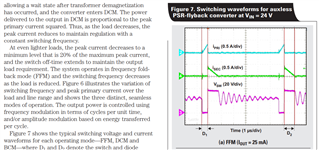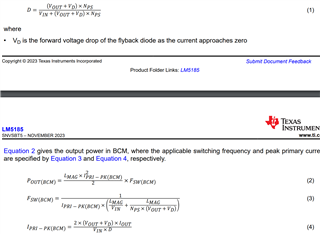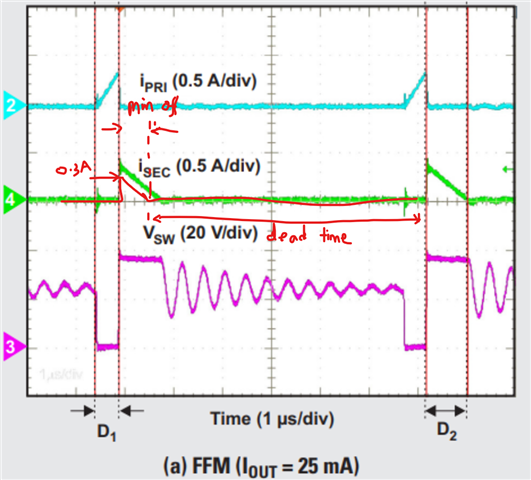Other Parts Discussed in Thread: LM5185, LM25180
Tool/software:
Hello, TI team
I am studying LM5180/LM5185 for MOSFET gate drive PSU and have some questions troubling me.
Appreciate you could help to clarify it.
1. The Min magnetizing inductance calculation is descripted at page19 of LM5180 datasheet as below.


If Toff-min=450ns is used for calculation, the related duty cycle D≥1-Fsw*Toff-min=1-450ns*350khz=84.25%, but the Dmax set at 60% in BCM operation mode, how to understand equation 15 and how to get equation 18?
TBH, the related description for magnetizing inductance calculation in LM5185 datasheet is easier to understand.
2.Regarding Cin, the related description at page 22 of LM5185 datasheet as below. but recommend low-ESR ceramic capacitor regarding Layout Guidelines, which is better? and same recommend capacitors are descripted in LM5185 EVM


Best regards
Hailong














